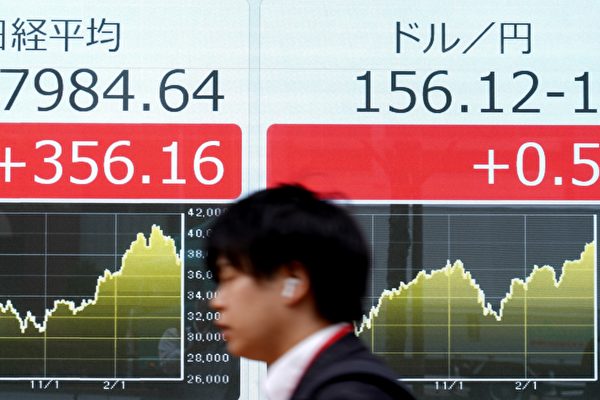On Monday, April 29th, the Japanese yen suddenly surged against the US dollar. Japanese authorities seemed to have taken measures to buy Japanese yen to prevent its further decline.
Earlier on April 29th, the exchange rate of the Japanese yen against the US dollar sharply rose from 160.245 to 155.01. Sources revealed that the Bank of Japan was found selling dollars to acquire yen. The latest exchange rate for the US dollar against the Japanese yen is 157.10.
When asked whether the government intervened, Masato Kanda, the highest-ranking official in charge of foreign exchange affairs in Japan and Vice Minister of Finance, declined to comment.
Due to Japan’s trading market being closed on Monday for a holiday, the Japanese Ministry of Finance did not immediately comment.
Market analyst Tony Sycamore at the forex trading platform IG in Sydney stated, “This move has all the characteristics of actual intervention by the Bank of Japan, and what better timing than during a public holiday in Japan for such intervention?”
Since the beginning of 2021, the depreciation of the Japanese yen against the US dollar has exceeded one-third. In terms of real value, the yen is at its weakest level since the 1970s.
While the weakening yen is beneficial for Japanese exporters, it increases import costs and adds to inflationary pressures.
At a meeting last Friday, the Bank of Japan kept its monetary policy unchanged. Bank of Japan Governor Ichiro Ueda stated at a press conference after the meeting that monetary policy does not directly target exchange rates, although exchange rate fluctuations may have significant impacts on the economy.
Over recent weeks, currency traders have been anticipating Japanese government intervention to support the yen, which has dropped by 11% against the US dollar this year. Despite the Bank of Japan historically exiting negative interest rate policies last month, the yen has still fallen to a 34-year low.
Although the Japanese yen surged suddenly, currency traders are betting that Japanese interest rates will remain low for a period, while US rates are relatively higher.
With US rates rising and Japanese rates staying near zero, investors are unwinding yen positions to buy the higher-yielding US dollar, putting pressure on the yen.
This suspected intervention by the Japanese government comes just days before the Federal Reserve’s policy review on May 1st. Expectations for a Fed rate cut have been delayed due to persistently high US inflation rates.
Earlier this month, the US, Japan, and South Korea issued rare warnings and agreed to hold “close discussions” on the currency market, with Tokyo stating its opposition to excessive yen fluctuations.
Nicholas Chia, Asia macro strategist at Standard Chartered Bank in Singapore, remarked, “If today’s move represents official intervention, it’s unlikely to be a one-off event.”
He added, “If the US dollar rises to 160 yen again, we might anticipate further actions from the Japanese Ministry of Foreign Affairs. In a sense, 160 yen represents a new bottom for the authorities.”
(This article was referenced from Reuters reporting)

